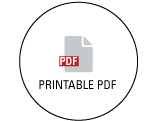P.G. Deryabin, D.K. Lvov, A.G. Botikov, V. Ivanov, T. Kalinovsky, A. Niedzwiecki, M. Rath
Biofactors 2008, 33(2): 85-97
Abstract:
Numerous outbreaks of avian influenza virus infection (A/H5N1) have occurred recently, infecting domestic birds, chicken and ducks. The possibility of the emergence of a new strain of influenza virus capable of causing a pandemic in humans is high and no vaccine effective against such a strain currently exists. A unique nutrient mixture (NM), containing lysine, proline, ascorbic acid, green tea extract, N-acetyl cysteine, selenium among other micro nutrients, has been shown to exert a wide range of biochemical and pharmacological effects, including an inhibitory effect on replication of influenza virus and HIV.
This prompted us to investigate the potential anti-viral activity of a nutrient mixture (NM) and its components on avian influenza virus A/H5N1at viral dosages of 1.0, 0.1 and 0.01 TCID_{50}. Antiviral activity was studied in cultured cell lines PK, BHK-21, and Vero-E6. Virus lysing activity was determined by co-incubation of virus A/H5N1 with NM for 0–60 min, followed residual virulence titration in cultured SPEV or BHK-21 cells. NM demonstrated high antiviral activity evident even at prolonged periods after infection. NM antiviral properties were comparable to those of conventional drugs (amantadine and oseltamivir); however, NM had the advantage of affecting viral replication at the late stages of the infection process.
Key Words:
Nutrient mixture, avian influenza virus A/H5N1, cell cultures, cytotoxicity, antiviral activity survival
Full Study:
